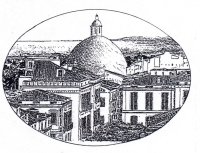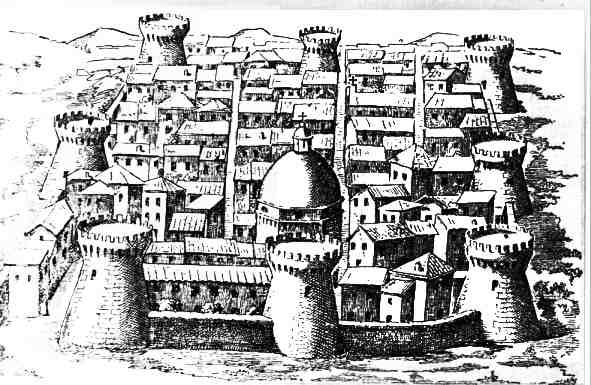
Giulianova: its history
Giulianova was founded in the I I I century b.c. by the Romans, who gave the name Castrum (Novum). Because of its position on the Adriatic sea (its name means "fortified place") , maybe Castrum has been used for defence against the pirates and picenum people, just subjugated. Archaeological remains found in its subsoil, now collected in the museums of Abruzzo, can prove what such a rich and powerful town Castrum was. Its ruins could be seen till the last century, but now we can see only few mosaics in somewhere near the cimitery, hidden by the grass, at least as told by some tourists guide.
During Middle Age Castrum was named S.Flaviano Castle, by the name of Flaviano The Patriarch of Costantinopoli. His bones were found on Castrum beach, they miraculously fled the heretics, which the Patriarch fought against. In that same place where the bones were found was built a sumptuous Temple dedicated to him.
In 1382 S.Flaviano Castle became a feudal domain of Count Antonio of Acquavia, thanks to his military services for Carlo III of Durazzo.
On 22th july 1460 near S.Flaviano Castle along Tordino river, there was such a battle between the Angevins and the Aragoneses, that was never seen before. It was known as San Fabiano Battle. The young Ludovico Lazzarelli wrote a latin poem about it. One year after, Matteo from Capua, who was salaried by Aragoneses, and some people from the town of Teramo called " Teramani Spennati " , just persecuted by the Acquaviva's, besieged S.Flaviano Castle and then destroyed it after conquered. The sumptuous Temple, as beautyful as that one of Teramo, was destroyed too, the only thing we have, nowadays in the Cathedral, is the S.Biagio's arm, a silver manufacture.
In 1463 Giuliantonio the last Acquaviva had got a peace treaty with the king Ferdinando of Aragon in which he obteined all the feudal domains that were of his family, S.Flaviano Castle too. That town was full of ruins and malaria too, so Giuliantonio prefered to build a new town, near the old one but a little up, that called with his name " Giulia (Nuova) " . There was an agreement between Giuliantonio and people from Terravecchia, as was called the old town, he put the money and they put their work. The architect probably was Francesco di Giorgio Martini from Siena.

Giulia century XVI.
In the following centuries Giulia Nuova was sacked and destroyed many times, first one in 1596 and then in 1708 by the Germans that burnt it, but the worst offence was in 1798, when was occupyed by a french army of Napoleon. Those soldiers (maybe to warm their hands?), burnt all those important documents that told the history of Giulianova from the beginning. They were lost for ever.
During Risorgimento, on 15th october 1860 Giulianova, first town of new Reign, gave its best welcome to the King Vittorio Emanuele II. Newspapers of that time told that the Mayor of Giulianova, baron Gaetano Ciaffardoni, fastly stopping the horse of the king, so he shouted " You Majesty, you are a thief, ... because you stole the heart of all the Italians". The king after a little surprise seems to have smiled and said " You have called me, I come ".
Nowadays Giulianova, with its 22.000 inhabitants, is one of the most important town of Abruzzo for sea tourism . Hotels and restaurants are well supported by an excellent fishing industry in its local port and by the great quality of the fish that can be found in this area of Adriatic sea. So we have in our local cuisine very important dishes, as we can remember the fish soup " alla giuliese " . We've just talked about it suggesting which wines are well combined with., when we've dealt with our wines.

